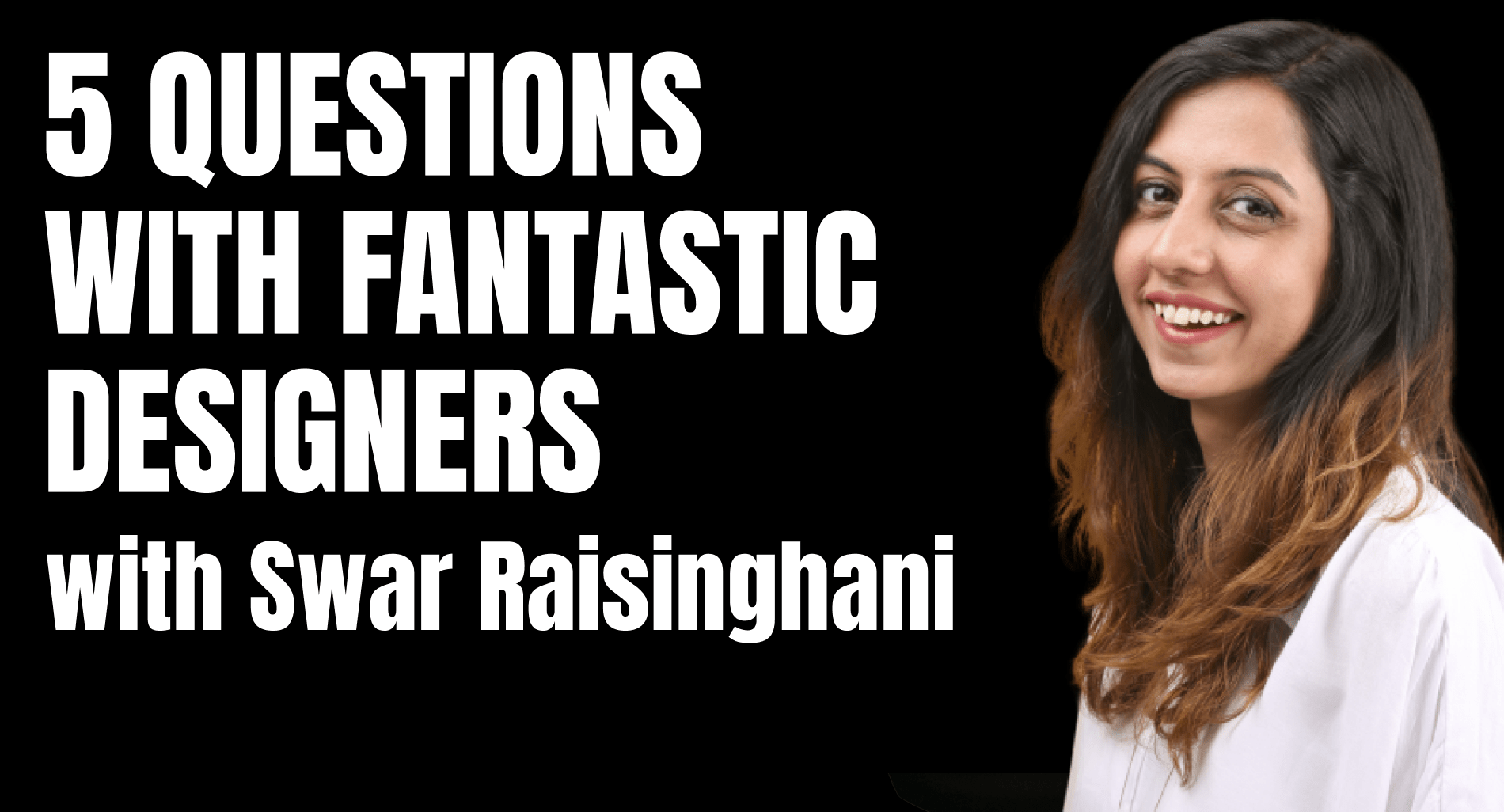Swar is a Co-founder and Design Lead at Xeno Co-lab, a service design and social innovation consultancy based in India, working across diverse sectors such as fin-tech, social media companies, digital services for marginalised communities, financial services, and healthcare to help companies design products and services that are centred in the needs of the diverse consumers.
Swar is a designer with a deep understanding of human-centred design (HCD) and holds a MFA in Design for Social Innovation. She is responsible for user research & strategy, and helps organisations understand how to best adopt HCD for innovation and as a way of working. She worked as a Service Designer at Veryday NYC, for 1.5 years where she focused on using the human-centred design process to design healthcare experiences. After moving to Veryday Stockholm, she applied that process across sectors to build customer-centric experiences, and also innovation capability building for organisations.
1. What design trends do you think will take off this year and more in the future?
Planet-centered design and sustainable design are trends that the design community across disciplines and expertise have started to steer towards and more so, after the pandemic. This will only gain more relevance and momentum in the years with actionable methods, tools and processes to commit to it. Another trend that might emerge is the need for stability or certainty within experiences that may arise from the uncertainty that everyone has been through collectively because of the pandemic and economic crisis. This might have various implications on how products and services are designed and one of them could be a larger belief and reliance on community. Creative, community-sourced assistance, support and solutions really helped people get through the pandemic where systems were overwhelmed, overworked and under-prepared and it brought people and communities closer in a way to make us more resilient. That could be something that sticks and also reflects through how products and services are perceived and designed.
2. When it comes to making design and the design industry more diverse, equal, and inclusive, what changes are needed or would you like to see?
What is necessary is creating an environment for inclusion more intentionally rather than a cookie cutter approach to inclusion. A friend who works at a global design consultancy recently mentioned that while we have all understood the need for our design teams to be diverse to represent different voices, we don’t spend enough time and energy to ensure that the environment is also conducive to their voices being heard. Someone getting a seat at the table is still different from someone’s voice being heard, acknowledged and valued. It is important that we also focus on creating an environment and culture that enables that.
3. What are the biggest challenges you had to face as a designer? Did you overcome them? How?
One of the biggest challenges has been elevating the role of designers and design teams in organisations to convince companies that design can have a larger business impact. We try to overcome this by sharing evidence of the impact at a smaller scale by implementing a pilot. That creates conviction and trust in the process for us to be able to implement it at a larger scale.
4. What are 3 things you were not taught in school (if you were formally trained in design) that you wished you had been taught?
a. The impact of systems thinking as a designer: We are taught of it as a framework but not as an approach to really understand the impact of our work on different aspects of a system and how we can design more holistically while being aware of that.
b. The role of designers as facilitators & collaborators across the process from research to implementation: That requires a lot of other skills and responsibilities that you only learn on the job. It is important to realise your role as facilitators and build those skills earlier on.
c. The emphasis on equity-centred design and planet-centred design: These are now emerging and have evolved in recent times but should definitely be addressed in schools now to help designers realise their responsibility in creating an equitable and sustainable future through the solutions we put out in the world.
5. Why do you think design matters?
Design helps us create the change we want to see. That gives us power but also a huge responsibility to create changes through products, services and experiences that not just create a positive impact for the users but also creates positive systemic impact. Design provides us with the tool to solve challenges, fix broken systems and create idealistic and innovative solutions that have never existed before! By doing so, we steer the society towards a more optimistic future.




